Within the world’s aquatic ecosystems, there are countless different species of fish and other marine organisms that scientists are still discovering today. From saltwater to freshwater, lakes to coral reefs, the biodiversity that exists in Earth’s many bodies of water is astounding. Let’s dive in and explore some unique fish whose names begin with the letter “I”.

1. Indian Glassfish

Indian glassfish are commonly identified by their translucent skin.
©Grigorev Mikhail/Shutterstock.com
The Indian glassfish is a species of freshwater fish belonging to the Ambassidae family. These fish can grow to a maximum length of 3.2 inches, and are a very popular species for aquarium keepers. They feed on small invertebrates, such as crustaceans and annelid worms. Often found in standing water, this species has a native range that spans several countries in Asia.
One distinct feature of this species is their remarkably translucent skin, which allows us to see their internal organs and bone structure. Male Indian glassfish can be identified by the dark edges of their dorsal fins and slightly more yellow body colors.
2. Iridescent Shark
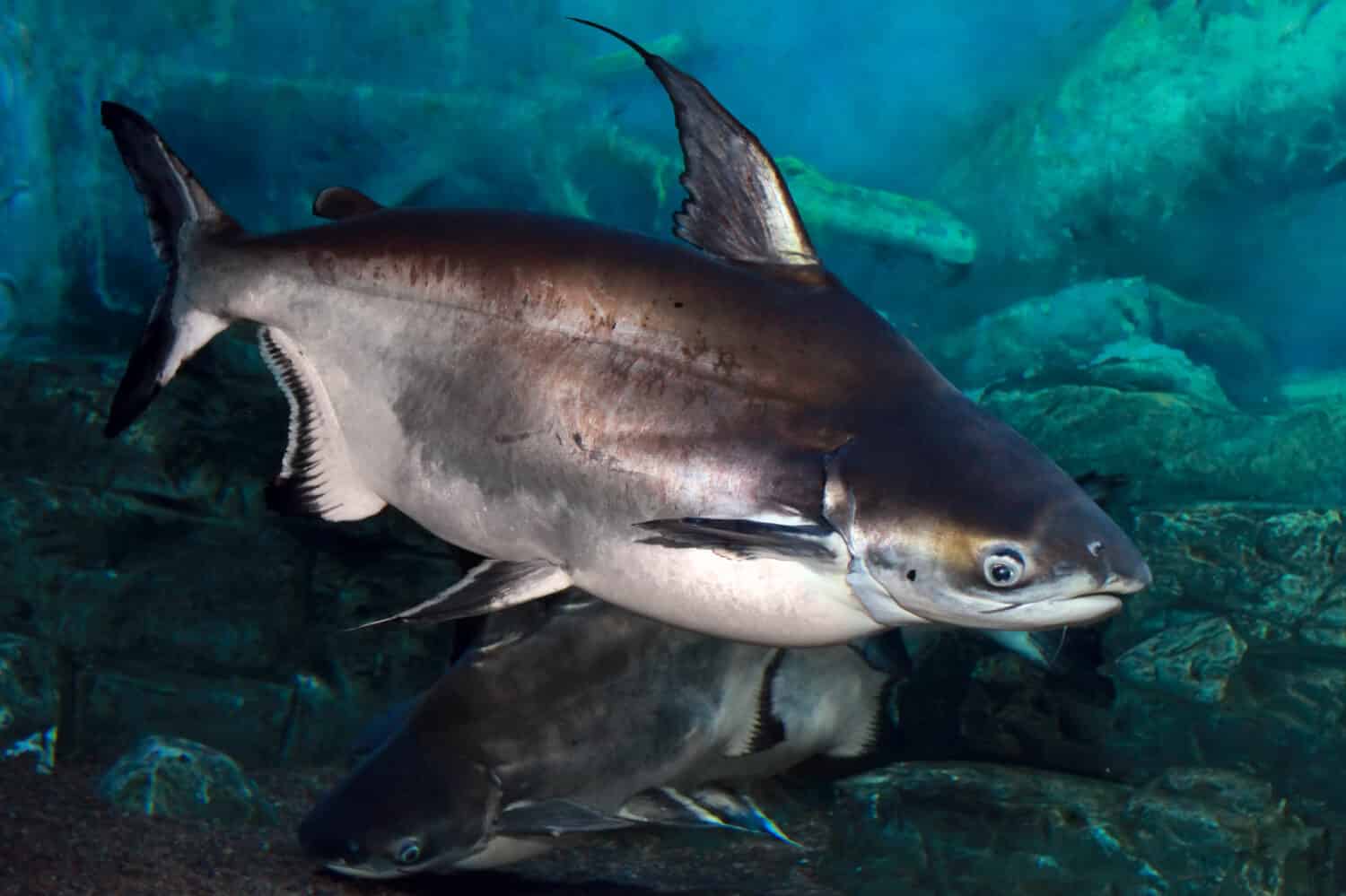
Iridescent sharks are native to the rivers of Southeast Asia.
©Tatiana Belova/Shutterstock.com
The iridescent shark is a species of shark catfish that is native to the large rivers of Southeast Asia. These fish get their name from the iridescent glow that can be seen in juveniles, as well as their resemblance to sharks. Adult iridescent sharks can reach up to about 4 feet in length and can weigh up to 100 pounds. Sadly, once these fish are fully grown, they lose their beautiful iridescence. As a migratory species, they are very active and will move upstream and downstream multiple times per year.
3. Ice Blue Zebra

Ice Blue Zebras are classified as “near threatened” by the IUCN.
©Blaj Gabriel/Shutterstock.com
The ice blue zebra, also known as William’s Mbuna, is a species of small cichlid fish. This species can grow up to about 5 inches in length. They get their name from their striped body and vibrant blue hue. As far as living arrangements go, these fish are pretty picky. Ice blue zebras are endemic to Lake Malawi in Africa, which means they do not live in the wild anywhere else on Earth. Even more-so, they are only found in the southeastern arm of the lake. Like the Indian glassfish, ice blue zebras are a popular species among aquarium owners.
4. Icefish
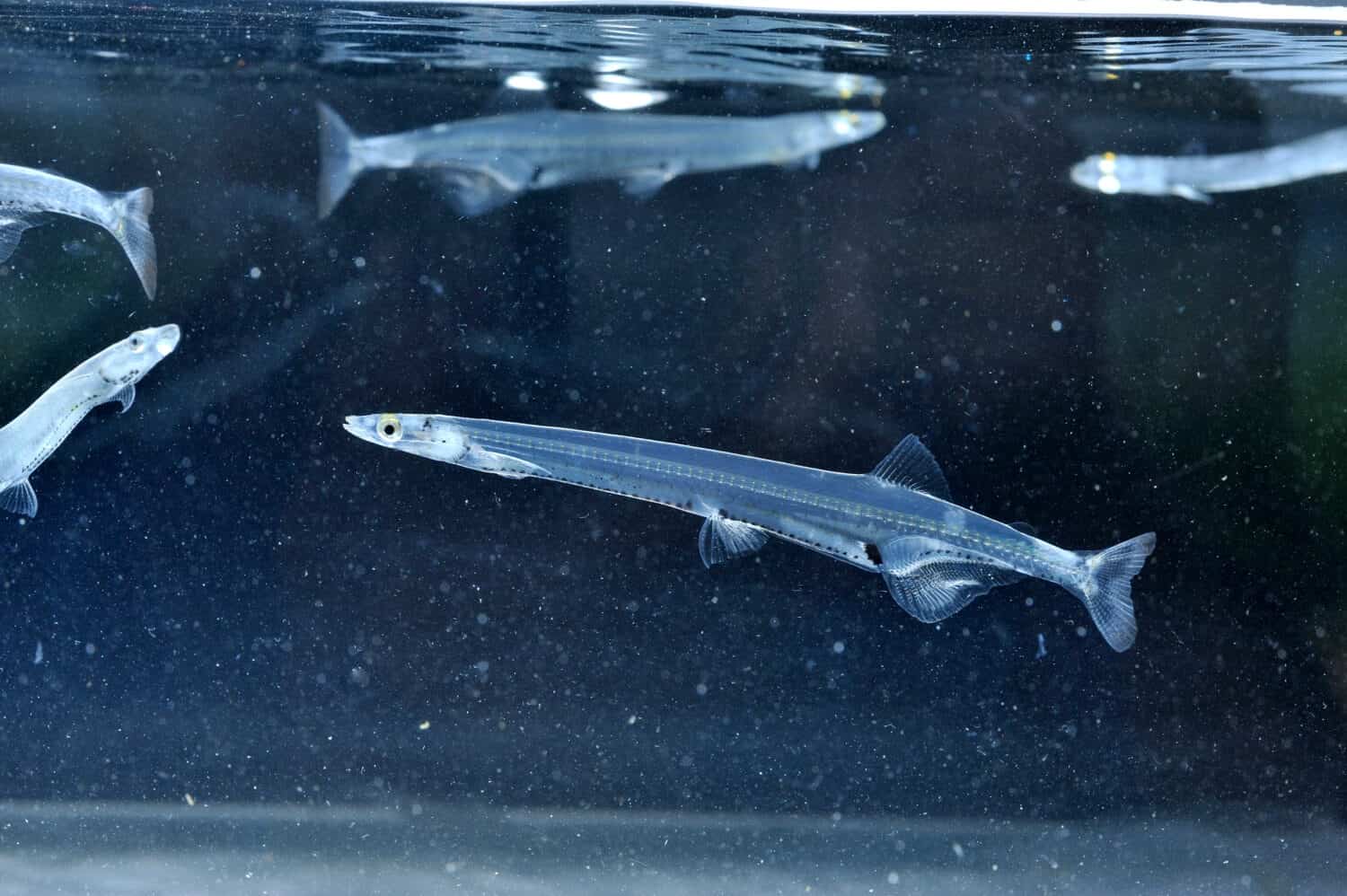
Icefish, also known as noodlefish, are known for their long, slender body shape.
©yamaoyaji/Shutterstock.com
Icefish are a small family of osmeriform fish. Their native habitat ranges throughout Eastern Asia. Depending on the species, icefish prefer saltwater or freshwater, and some even swim in both. Similar to the Indian glassfish, these long, slender fish are known for their translucent skin. However, unlike other fish species, icefish have very few to no scales on their body. Adults can reach up to almost 9 inches in length, although most are much smaller.
5. Ide
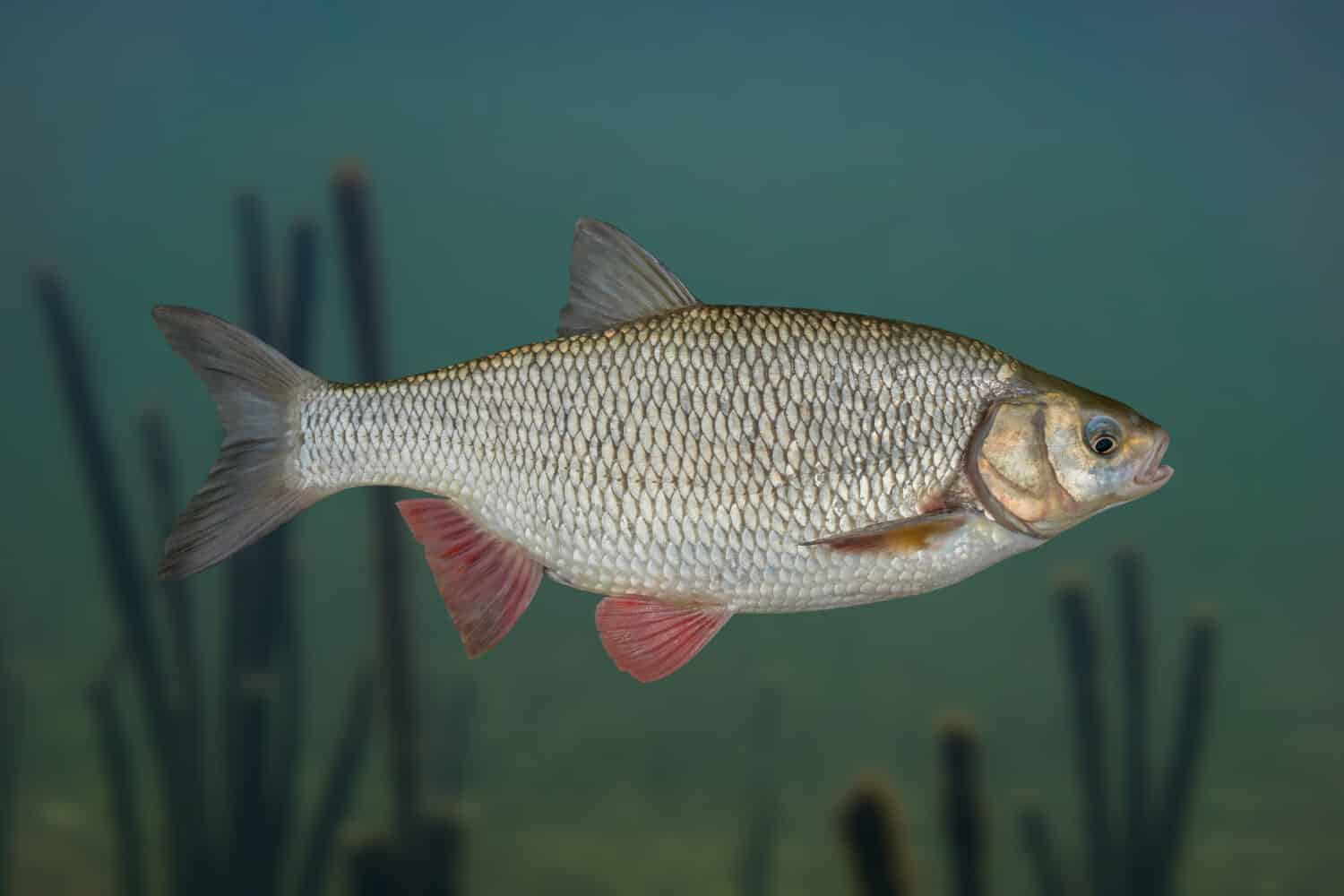
The European record for a rod-caught Ide is about 12.1 pounds.
©FedBul/Shutterstock.com
The ide is a freshwater fish species from the Cyprinidae family. This species is typically found in lakes, rivers, and ponds across Northern Europe and Asia. Ides are rather bulky compared to other fish of the same family and can reach weights of up to 12 pounds. The name comes from the Swedish id, which refers to its bright color.
In Eastern Europe, the ide is prized as a tasty edible fish. However, in farther north regions they are not typically considered a food fish.
6. Inanga
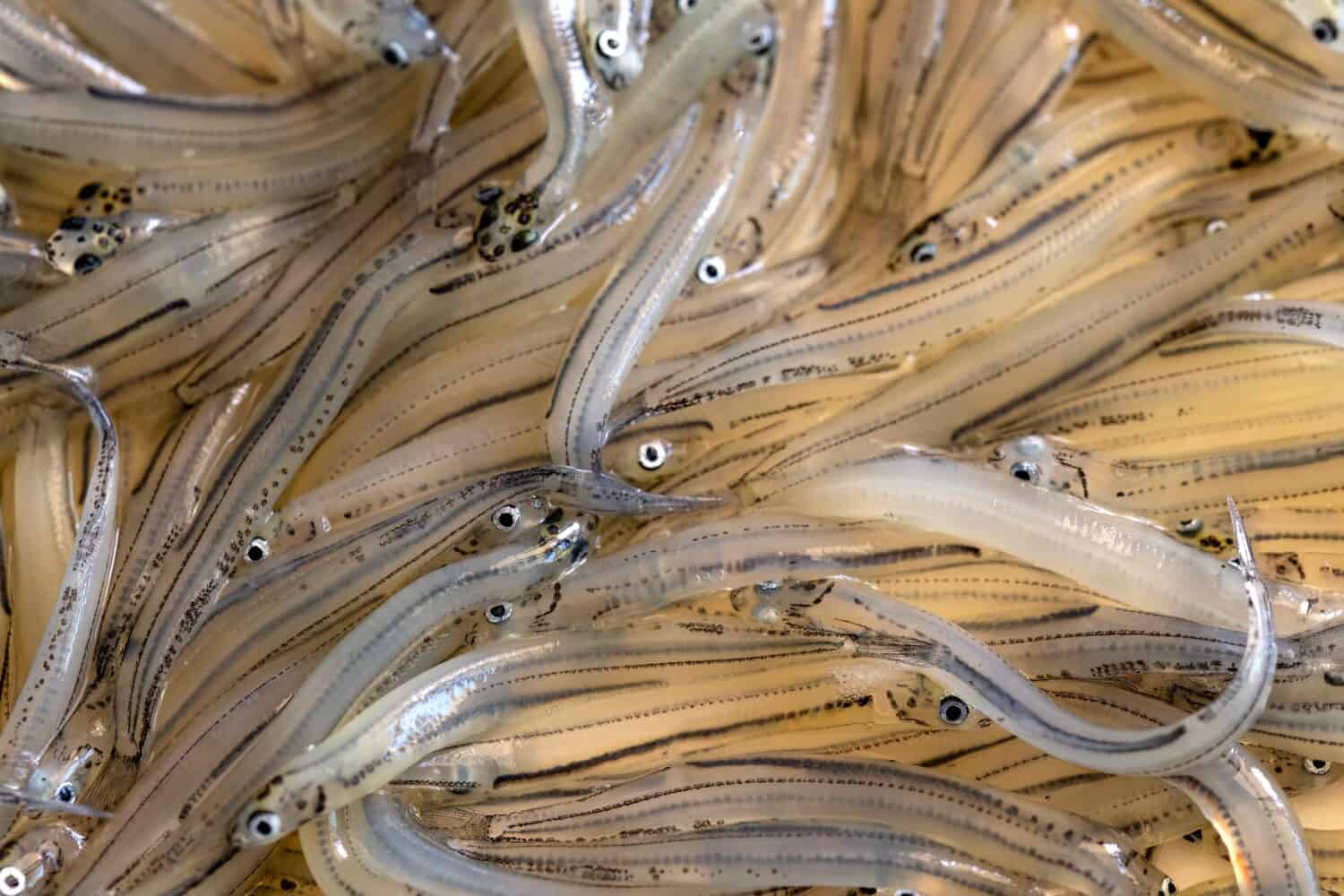
Inanga live in lowland freshwater habitats like streams, rivers, and wetlands.
©Philip Armitage/Shutterstock.com
Inanga are the most common and smallest whitebait species. Other species that make up the whitebait family include branded kokopu, giant kokopu, and kōaro. Inanga have an unusual lifecycle compared to most fish. After hatching from their eggs, they float downstream into the ocean, where they spend the next six months. During the spring season, these juveniles migrate back upstream and grow into adult fish.
Despite being native to New Zealand, Inanga are also found in warm waters near Australia, Argentina, and Chile. They prefer to live in lowland freshwater regions, such as coastal creeks, streams, and wetlands. Due to their size, they don’t typically migrate as far inland as other species of the same family.
7. Island Frogfish
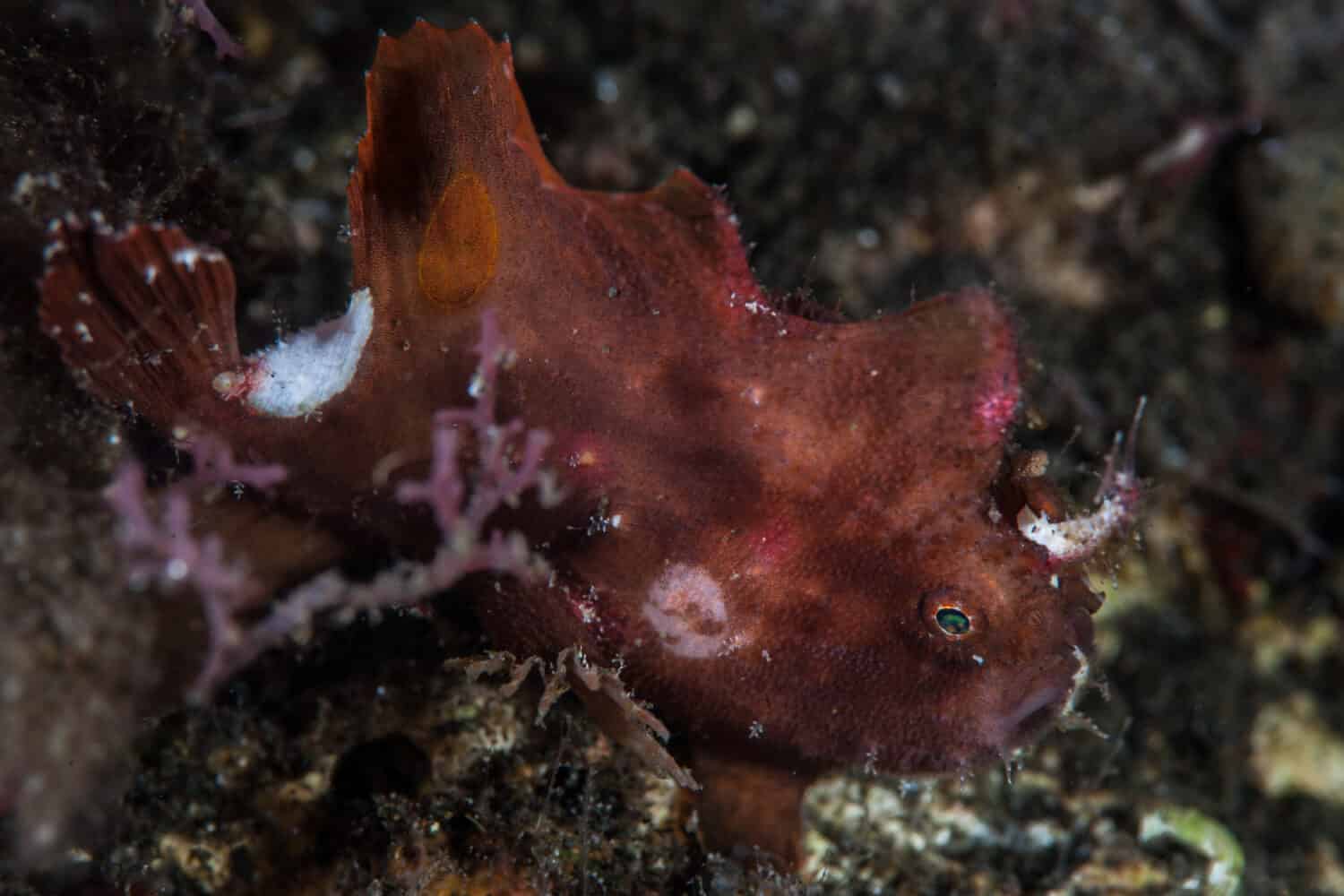
Island frogfish use camouflage to mimic common marine life, such as sponges and coral.
©Ethan Daniels/Shutterstock.com
The Island frogfish is a small member of the anglerfish family Antennariidae. This species is native to the coast of South America, the Caribbean, and western portions of the Atlantic Ocean. Island frogfish typically reside in coral or rock reefs at a depth between 10-100 feet. They use camouflage to mimic the appearance of marine life around them, such as sponges and coral, and stay hidden from predators. Although these fish do not move around much, they do so by using their adapted pectoral fins to walk along the reefs and sea floor.
8. Idiot Fish
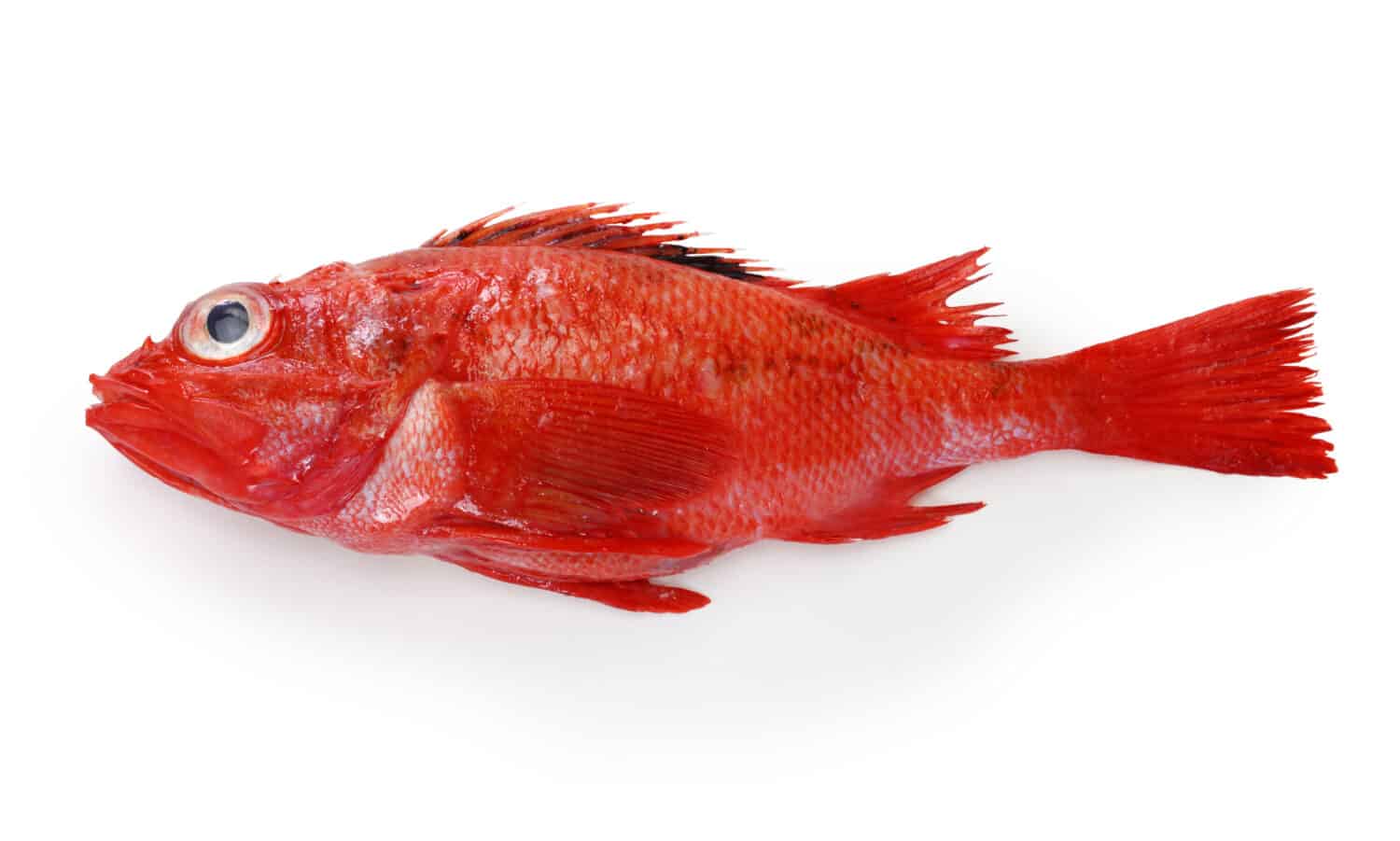
The shortspine thornyhead is also known as the idiot fish.
©bonchan/Shutterstock.com
The idiot fish, also known as the shortspine thornyhead or channel rockcod, is a species of ray-finned fish of the Scorpaenidae family. This species can grow up to about 31 inches in length, and they are most commonly found in the northern and northeastern Pacific Ocean. Idiot fish have a much longer lifespan than most fish, with some living as long as 100 years. As a demersal fish, they can also be found at depths of almost a mile underwater.
In case you were wondering, idiot fish get their humorous name from their oversized head and large eyes.
The Largest Fish That Starts With I

The Indo-Pacific marlin can reach weights of over 1,000 pounds.
©kelldallfall/Shutterstock.com
The largest fish that starts with “I” is the Indo-Pacific marlin. This species of blue marlin can reach a length of up to 16 feet, and some weigh upwards of 1,400 pounds. They feed on several different marine organisms near the surface and use their long bill, pictured above, to stun or injure their prey while hunting. Inhabiting the tropical and sub-tropical waters of the Pacific and Indian Oceans, these fish are highly sought after as game fish by anglers around the world. Unfortunately, due to overfishing, they are now classified as a threatened species by the IUCN.
Summary of Fish That Start With An I
| Common Name | Scientific Name |
|---|---|
| Indian Glassfish | Parambassis ranga |
| Iridescent Shark | Pangasianodon hypophthalmus |
| Ice Blue Zebra | Maylandia greshakei |
| Icefish | Neosalangichthys ishikawae |
| Ide | Leuciscus idus |
| Inanga | Galaxias maculatus |
| Island Frogfish | Antennatus bermudensis |
| Idiot Fish | Sebastolobus alascanus |
| Indo-Pacific Marlin | Makaira mazara |
The photo featured at the top of this post is © iStock.com/LUNAMARINA
Thank you for reading! Have some feedback for us? Contact the AZ Animals editorial team.






